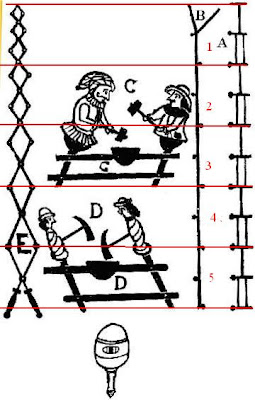Finally the builders have left and I’m getting ready to move into my new workshop. Originally they estimated finishing in January, but a few events conspired to cause delays.
There’s one wall of bare plaster which I’m painting, then I’m building a work bench to fix to the end wall. I’ve got some of my wheel parts ready for assembly but I’m going to build a test rig just to test the action of one mechanism, which I’m confident will act as I designed it to. I know how overconfident I sound but the truth is the prime mover is so simple to understand, once you know, it’s a forehead slapping moment…..
I know people are sceptical and I don’t blame them, I’ve been positive so many times before (haven’t we all?) but never like this. For most of the last year, I’ve been writing up details of the clues and the reasons for the meanings I’ve taken from them. My concern is to try to show what and where the information is in the books, and what it means, and try to avoid dubious interpretations. I think that if the wheel works that should remove any doubt, but if it doesn’t, I’m still certain that it is very, very close.
Much of my code breaking has centred on the number five which Johann Bessler appeared to be obsessed with. I think the number five might have been the one word he was worried about accidentally revealing in case it might give his secret away. But that does not appear to have happened and perhaps he wasn’t speaking literally, but meant any accidental slip of the tongue.
Given the very simplicity of his wheel, I half expected someone else to stumble upon the truth about the Prime Mover, before I had a chance to test it out on a model, and although there has been much discussion about certain clues Bessler sprinkled all over his works, and I thought that they were getting close, the focus of the talk moved away.
My one determination is to build and test my design before I release it to the public. I’m not interested in patents, IPs nor am I concerned at someone else using my/Bessler’s design for their own purposes. Having spent most of my life chasing information about Bessler, I would like to think it that I did something worthwhile with my life that would be remembered after I’m gone.
My translations and publications of everything to do with Bessler will still be available for years to come, and probably better translations will appear. But I like the idea that all information currently discussed and quoted from, originated from my hand and was the source most commonly used in this field of research.
So at last, maybe I’ll succeed in building a proof of principle machine.
JC











